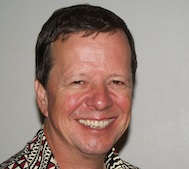Wednesday November 9, 2011, Suva, Fiji - A Pacific wide exercise to test and improve the emergency response to tsunamis took place today with 20 Pacific Islands Countries, including Australia and New Zealand, running simulations and drills.
Known as Pacific Wave 11, the exercise asked countries to pick one of 10 regional or local tsunami scenarios to react to. The hypothetical tsunamis were created by powerful earthquakes off the shores of either Russia, Ryukyu Islands, west and east of the Philippines, Vanuatu, Tonga, Chile, Ecuador, Central America, and Aleutian Islands. Fiji, for example, is basing their scenario on a magnitude 8.9 earthquake in the Tonga trench, while Palau is basing theirs on a massive earthquake in the Philippine Trench.
 From the Managers Desk
From the Managers Desk



 Careful monitoring before, during and after the impending deep seabed mineral mining off the shores of Papua New Guinea will provide the hard data that will guide the responsible deep seabed mining practices of the future.
Careful monitoring before, during and after the impending deep seabed mineral mining off the shores of Papua New Guinea will provide the hard data that will guide the responsible deep seabed mining practices of the future. Having spent much of his working life in Papua New Guinea, petroleum geologist Michael McWalter has seen the development of the petroleum industry within PNG, and has come to call that country his home.
Having spent much of his working life in Papua New Guinea, petroleum geologist Michael McWalter has seen the development of the petroleum industry within PNG, and has come to call that country his home. 

